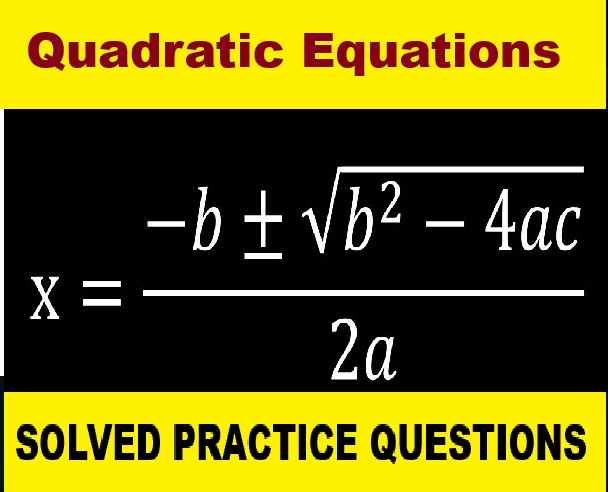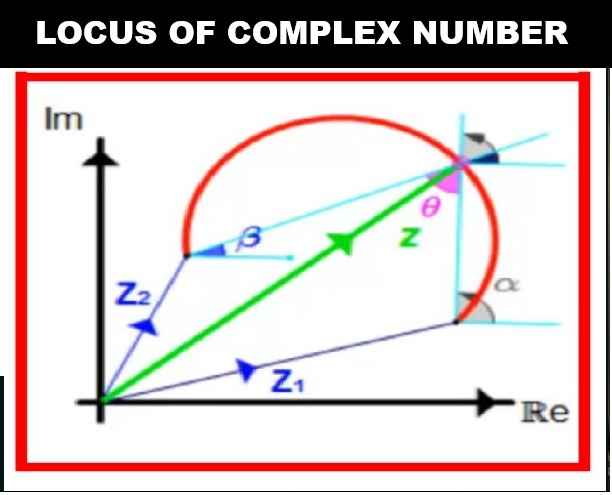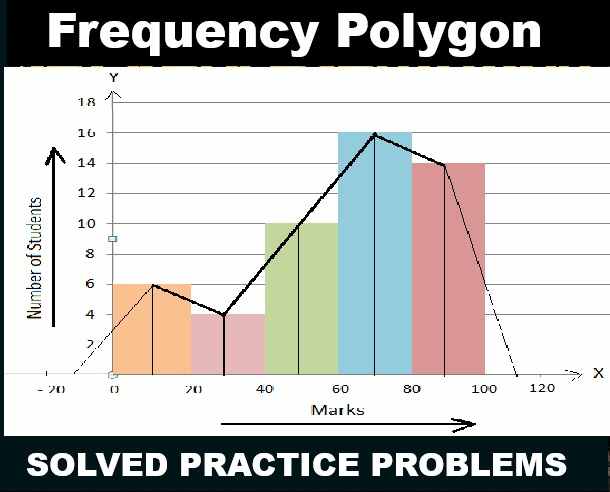Complex Numbers Class 11 OP Malhotra Exe-9F ISC Maths Solutions Ch-9 Solutions. In this article you would learn about Square root of Complex Number and Cube root of unity. Step by step solutions of latest textbook has been given as latest syllabus. Visit official Website CISCE for detail information about ISC Board Class-11 Mathematics.
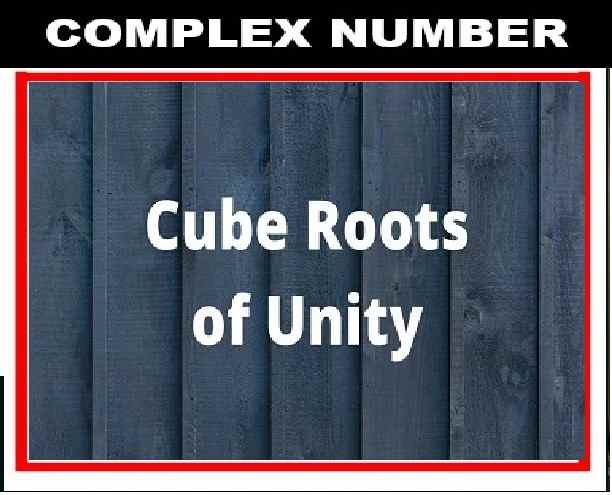
Complex Numbers Class 11 OP Malhotra Exe-9F ISC Maths Solutions Ch-9
| Board | ISC |
| Publications | S Chand |
| Subject | Maths |
| Class | 11th |
| Chapter-9 | Complex Numbers |
| Writer | O.P. Malhotra |
| Exe-9(F) | Square root of Complex Number and Cube root of unity. |
Exercise- 9F
Complex Number Class 11 OP Malhotra Exe-9F Solution.
Que-1: Find the square root of the following complex numbers.
(i) 3 + 4i
(ii) – 8 + 6i
(iii) – 40 – 42i
(iv) i
(v) [{(2+3i)/(5−4i)}+{(2−3i)/(5−4i)}]
Sol: (i) √(3+4i) = x + iy; where x, y ∈ R
On squaring both sides ; we have
3 + 4i = (x + iy)²
⇒ 3 + 4i = x² – y² + 2ixy
On comparing real and imaginary parts on both sides ; we have
x² – y² = 3 …(1)
and 2xy = 4 …(2)
∴ x² + y² = √{(x²-y²)²+(2xy)²}
= √(3²+4²) = 5 … (3)
On adding (1) and (3); we have
2x² = 8 ⇒ x² = 4 ⇒ x = ± 2
eqn. (3) – eqn. (1) gives ;
2y² = 2 ⇒ y = ± 1
Since xy be +ve
∴ x and y both are of same sign
Hence x = 2, y = 1 or x = – 2, y = – 1
∴ √(3+4i) = 2 + i or – (2 + i)
(ii) √(-8+6i) = x + iy where x, y ∈ R
On squaring both sides ; we have
– 8 + 6i = (x + iy)² = x² – y² + 2ixy
On ωmparing real and imaginary parts on both sides, we get
x² – y² = – 8 … (1)
and 2xy = 6 … (2)
Now x² + y² = √{(x²-y²)²+(2xy)²}
= √{(-8²)+6²}
= √(64+36) = 10 … (3)
On adding (1) and (3) ; we have
2x² = 2 ⇒ x = ± 1
eqn. (3) – eqn. (1) gives ;
2y² = 18 ⇒ y² = 9 ⇒ y = ± 3
Since xy be +ve ∴ both x and y are of same sign.
∴ x = 1; y = 3 or x = – 1, y = – 3
Thus √(-8+6i) = 1 + 3i or – (1 + 3i)
(iii) √(-40+42i) = x – iy where x, y ∈ R
On squaring both sides ; we have
– 40 – 42i = (x – iy)² = x² – y² – 2ixy
On comparing real and imaginary parts on both sides ; we have
– 40 = x² – y² …(1)
and 2xy = 42 …(2)
Now x² + y² = √{(x²-y²)²+(2xy)²}
= √{(-40)²+42²}
= √(1600+1764)
= √3264 = 58 … (3)
On adding (1) and (3) ; we have
2x² =18 ⇒ x = ± 3
eqn. (3) – eqn. (1) gives ;
2y² = 98 ⇒ y² = 49 ⇒ y = ± 7
Since xy be of +ve sign ∴ both x and y are of same sign
i.e. when x = 3, y = 7 or x = – 3, y = – 7
Thus, √(-40+42i)
= 3 – 7i or – 3 + 7i
= ±(3 – 7i)
(iv) Let √i = x + iy;
On squaring; we have i = (x + iy)² = x² – y² + 2ixy
On comparing real and imaginary parts on both sides, we have
x² – y² = 0 …(1)
and 2xy = 1 …(2)
∴ x² + y² = √{(x²-y²)²+(2xy)²}
= √(0²+1²) = 1 … (3)
On adding eqn. (1) and eqn. (3); we have
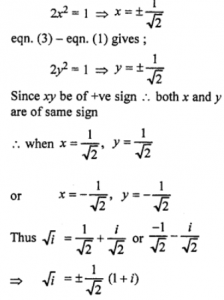
![Que-1: Find the square root of the following complex numbers. (v) [{(2+3i)/(5−4i)}+{(2−3i)/(5−4i)}]](https://icsehelp.com/wp-content/uploads/2025/06/2-11-300x250.png)
Que-2: If ω is a cube root of unity, then
(i) ω + ω² = ….
(ii) 1 + ω = …
(iii) 1 + ω³ = ….
(iv) ω³ = ….
Sol: Now ω be the cube root of unity
∴ ω = (−1+√3i)/2 and ω² = (−1−√3i)/2
(i) 1 + ω² = {(−1+√3i)/2} + {(−1−√3i)/2}
= −2/2 = – 1
(ii) 1 + ω = 1 + {(−1+√3i)/2}
= (2−1+√3i)/2
= (1+√3i)/2 = – ω²
(iii) 1 + ω² = 1 + {(−1−√3i)/2}
= (2−1−√3i)/2
= (1−√3i)/2
= [−{(−1+√3i)/2}] = – ω
(iv) ω³ = ω². ω = ((−1−√3i)/2) ((−1+√3i)/2)
= {(−1)²−(√3i)²}/4
= (1+3)/4 = 1
Que-3: If 1, ω, ω² are three cube roots of unity, prove that
(i) (1 + ω²)4 = ω
(ii) (1 + ω – ω²)³ = (1 – ω + ω²)³ = – 8
(iii) (1 – ω) (1 – ω²) = 3
(iv) {1/(1+ω)} + {1/(1+ω²)} = 1
Sol: (i) (1 + ω²)4 = (- ω)4= ω³ . ω = ω [∵ 1 + ω + ω² = 0 and ω³ = 1]
(ii) (1 + ω – ω²)² = (- ω² – ω²)³
= (- 2ω²)³ = – 8ω^6
= – 8 (ω³)² = – 8
and (1 – ω + ω²)³ = (- ω – ω)³
= (- 2ω)³ = – 8ω³
= – 8 x 1 = – 8 [∵ 1 + ω + ω² = 0 and ω³ = 1]
(iii) (1 – ω) (1 – ω²) = 1 – ω – ω² + ω³
= 1 – (ω + ω²) + 1 [∵ ω³ = 1]
= 1 – (- 1) + 1 [∵ 1 + ω + ω² = 0]
= 1 + 1 + 1 = 3
(iv) {1/(1+ω)} + {1/(1+ω²)} = (1/−ω²) + (1/−ω) [∵ 1 + ω + ω² = 0]
= (1+ω)/−ω² = −ω²/−ω² = 1
Que-4: (i) (1 – ω – ω²)6 = 64
(ii) (1 + ω – ω²) (1 – ω + ω²) = 4
Sol: (i) (1 – ω – ω²)6 = [1 – (ω + ω²)]6 = [1 – (- 1)]6 = 26 = 64 [∵ 1 + ω + ω² = 0]
(ii) (1 + ω – ω²) (1 – ω + ω²) = (- ω² – ω²) (- ω – ω) [∵ 1 + ω + ω² = 0]
= (- 2ω²) (- 2ω)
= 4ω³
= 4 x 1 = 4
Que-5: (3 + 5ω + 3ω²)6 = (3 + 5ω² + 3ω)6 = 64
Sol: (3 + 5ω + 3ω²)6 = (3 + 5ω² + 3ω)6
= [3 (- ω) + 5ω]6 [∵ 1 + ω + ω² = 0]
= (2ω)6 = 64 (ω³)² = 64
and (3 + 5ω² + 3ω)6 = [3 (1 + ω) + 5ω²]6 = [3 (- ω²) + 5ω²]6 [∵ 1 + ω + ω² = 0]
= (2ω²)6 = 64ω12 = 64 (ω³)4 = 64 [∵ ω³ = 1]
Que-6: ω28 + ω29 + 1 = 0
Sol: ω28 + ω29 + 1 = (ω³)9 . ω + (ω³)9 . ω² + 1
= 19 . ω + 19 . ω² + 1 [∵ ω³ = 1]
= ω + ω² + 1 = 0
Que-7: Prove that {(−1+i√3)/2}^n + {(−1−i√3)/2}^n is equal to 2 if n be a multiple of 3 and is equal to – 1 if n be any other integer.
Or
If 1, ω, ω² are the cube roots of unity, prove that ωn + ω2n = 2 or – 1 acωrding as n is a multiple of 3 or any other integer.
Sol: We know that cube root of unity are 1, ω, ω²
where ω = (−1+√3i)/2 and ω² = (−1−√3i)/2
∴ {(−1+i√3)/2}^n + {(−1−i√3)/2}^n
= ω^n + (ω²)^n
= ωn+ω²^n
Case-I : When n be a multiple of 3
∴ n = 3k
∴ ωn + ω2n = ω3k + ω6k = (ω³) + (ω³)2k = 1k + 12k =1 + 1 = 2
Case-II : When n be not a multiple of 3
∴ n = 3k + 1, 3k + 2
Subcase – I : When n = 3k + 1
ωn + ω2n = ω3k+1 + ω2(3k+1) = ω3k . ω + ω6k . ω²
= 1 . ω + 1 . ω² = ω + ω² = – 1 [∵ ω + ω² +1 = 0 and ω3k = (ω³)k = 1]
Subcase-II : When n = 3k+2
∴ ωn + ω2n = ω3k+1 + ω2(3k+2) = ω3k. ω² + ω6k + ω4 = (ω³)k ω² + (ω³)2k . ω³ . ω
= ω² + ω = – 1 [∵ (ω³)k = 1k = 1]
Thus, ωn + ω2n = 2 or – 1
according as n is a multiple of 3 or any other integer.
Prove the following:
Que-8: (1 – ω + ω²) (1 + ω – ω²) (1 – ω – ω²) = 8.
Sol: (1 – ω + ω²) (1 + ω – ω²) (1 – ω – ω²)
= (1 + ω² – ω) (1 + ω – ω²) (1 – (ω + ω²))
= (- ω – ω) (- ω² – ω²) (1 – (- 1)) [∵ 1 + ω + ω² = 0]
= (- 2ω) (- 2ω²)² = 8ω³
= 8 [∵ ω³ = 1]
Que-9: (i) (1 + ω) (1 + ω²) (1 + ω4) (1 + ω8) …. to 2n factors = 1
(ii) (1 – ω + ω²) (1 – ω² + ω4) (1 – ω4 + ω8)…… to 2n factors = 22n.
Sol: (i) L.H.S = (1 + ω) (1 + ω²) (1 + ω4) (1 + ω8) …. to 2n factors
= (1 + ω) (1 + ω²) (1 + ω³ . ω) (1 + ω6 . ω²) … 2n factors
= (1 + ω) (1 + ω²) (1 + ω) (1 + ω²) …. 2n factors
= (1 + ω)n (1 + ω²)n = [(1 + ω) (1 + ω2)]n
= [1 + ω + ω² + ω³]n = [0 + 1]n = 1n = 1 [∵ 1 + ω + ω² = 0 and ω³ = 1]
(ii) (1 – ω + ω²) (1 – ω² + ω4) (1 – ω4 + ω8) to 2n factors
= (1 – ω + ω²) (1 – ω² + ω³ . ω) (1 – ω³ . ω + ω6 . ω²) to 2n factors
= (1 – ω + ω²) (1 – ω² + ω) (1 – ω + ω²)…. 2n factors [∵ ω³ = 1]
= [(1 – ω + ω²) …. n factors] [(1 – ω² + ω) …. n factors
= (- 2ω)n (- 2ω²)n [∵ 1 + ω + ω² = 0]
= 2n (ω . ω²)n (- 1)2n
= 22n (ω³)n
= 22n1n
= 22n
Que-10: (a+bω+cω²)/(b+cω+aω²) = ω
Sol: LHS = (a+bω+cω²)/(b+cω+aω²)
= (aw³+bw+cw²)/(b+cw+aw²)
= {w(aw²+cw+b)} / (aw²+cw+b)
= w = RHS.
Que-11: {(a+bω+cω²)/(c+aω+bω²)} + {(a+bω+cω²)/(b+cω+aω²)} = – 1
Sol: LHS = {(a+bω+cω²)/(c+aω+bω²)} + {(a+bω+cω²)/(b+cω+aω²)}

= w² + w = -1
Que-12: If ω is a cube root of unity and n is a positive integer which is not a multiple of 3, then show that (1 + ωn + ω2n) = 0.
Sol: When n is not a multiple of 3
∴ n be of the form 3k + 1 or 3k + 2
Case – I. When n = 3k + 1
1 + ωn + ω2n = 1 + ω3k+1 + ω6k+2
= 1 + (ω³)k ω + (ω³)2k . ω²
= 1 + 1k . ω + 12k ω²
= 1 + ω + ω² = 0
Que-13: Show that (x + ωy + ω²z) (x + ω²y + ωz) = x² + y² + z² – yz – zx – xy.
Sol: L.H.S = (x + ωy + ω²z) (x + ω²y + ωz)
= x² + (ω² + ω) xy + xz (ω + ω²) + ω³y² + yz (ω² + ω4) + ω³z²
= x² – xy + xz(- 1) + y² + yz (- 1) + z² [∵ 1 + ω + ω² = 1]
= x² + y² + z² – xy – yz – zx = R.H.S
Que-14: Show that x³ + y³ = (x + y) (ωx + ω²y) (ω²x + ωy).
Sol: R.H.S = (x + y) (ωx + ω²y) (ω²x + ω²y) = (x + y) (ω³x² + ω²xy + ω4xy + ω³y²)
= (x + y) [1 . x² + xy (ω² + ω³ . ω) + 1 . y²] [∵ ω³ = 1]
= (x + y) (x² + xy (ω² + ω) + y²) = (x + y) (x² – xy + y²) [∵ 1 + ω + ω² = 1]
= x³ + y³ = L.H.S
Que-15: If 1, ω, ω² are cube roots of unity, prove that 1, ω² are vertices of an equilateral triangle.
Sol: Since 1, ω and ω² are the cube root of unity.
where ω = (−1+√3i)/2 and ω² = (−1−√3i)/2

Thus, 1, ω and ω² are the vertices of an equilateral triangle.
–: End of Complex Number Class 11 OP Malhotra Exe-9F ISC Math Ch-9 Solution :–
Return to :- OP Malhotra ISC Class-11 S Chand Publication Maths Solutions
Thanks
Please share with your friends
